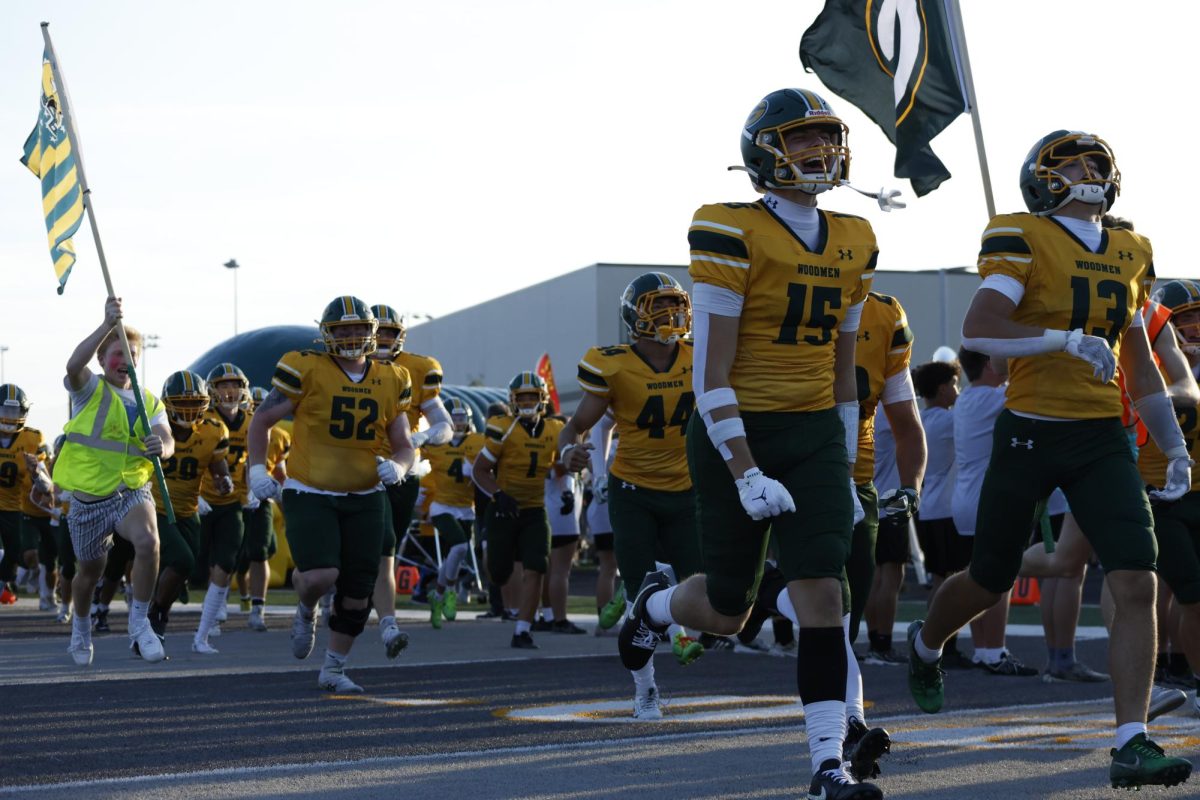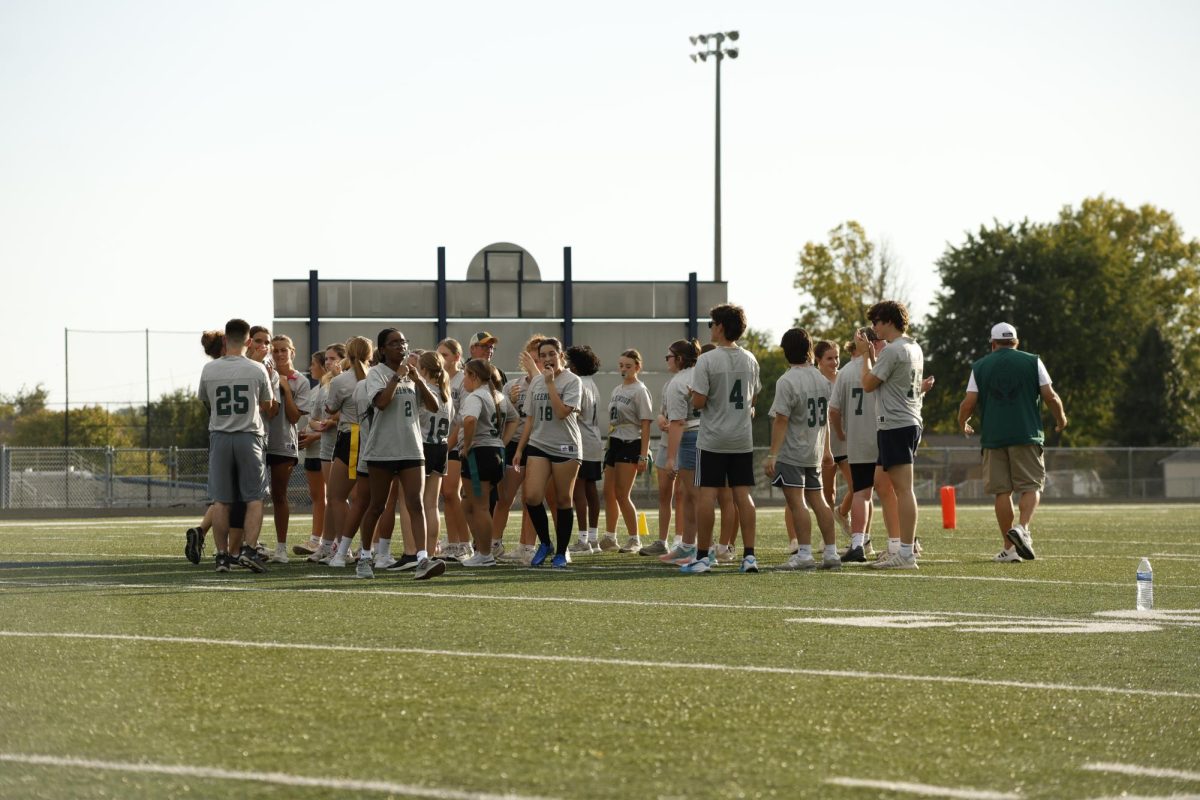Injuries can make or break an athlete’s sports career. These athletes pushed themselves and came back strong.
“I injured my ACL while playing basketball. A girl collided with me and my knee went backwards,” Kenna Martin senior soccer player said.
Playing contact sports can be risky, especially when involved in an intense game.
“I was at a basketball game my junior year, I went to block the ball and a guy went under me and swung my feet out from under me. I fell right on my shoulder and knew something had happened,” Ethan King senior basketball and baseball player said.
Injuries can happen so quickly and out of nowhere.
“I was in Florida for a cheer competition, and we were practicing the night before we competed. I wanted to get in some extra reps during the last five minutes. I wanted to get a video of my jumps so I could see what to work on, and at first my coaches told me no, but eventually they said they’d let me do one more. Then on the last one they recorded, my ankle rolled,” Addy Mahurin junior all-star cheerleaders said.
Getting injured in the beginning of the season was not one of junior Ayden Housemans assumptions on how the season was going to go.
“I broke my collarbone Week 4 against Mooresville during the 3rd quarter. I got tackled at Mooresville but at Perry Meridian I fell and broke it,” junior football player Ayden Houseman said.
Mental health is essential for any athlete who went through a traumatic injury.
“Mentally it was hard right after surgery because I wasn’t able to play basketball or soccer and I couldn’t do anything, but it got better once I was able to run and jump again,” Martin said.
Having friends and family stay close is one of the best motivators for a full recovery.
“During my recovery, I just had to sit out of practices and games which really just wasn’t fun. My sophomore year I also had to sit out because I broke my finger, so it was like I was repeating the years. My friends were by my side and pushing for me to have a full recovery and not risk it and get hurt again. My girlfriend at the time helped me do things I needed help with. She helped me get through that. I was also bummed because the baseball season was starting right after basketball season ended. I was nervous I wasn’t going to be ready for the start of the season,” King said.
Mahurin said she felt defeated knowing that she was at a good place in her athletic career.
“I felt defeated knowing that I was in such a good place and that it could’ve been prevented. I was starting to work on my full and putting it onto the floor then I got hurt. I just felt held back knowing how good I would be right now,” Mahurin said.
The hopes of coming back at the end of the season motivated him to get recovered faster.
“During the recovery I had to still be there for my team and lead with the hopes of coming back during the season,” Houseman said.
Having a safe recovery and not rushing was an important part in senior Kenna Martins journey to full recovery.
“Rehab took around eight months post surgery. Recovery was hard, and after going through it, I decided I did not want to try playing soccer in college. Playing soccer in college was always something that I wanted to see in my future, but after my injury, I just don’t think I could play like that again,” Martin said.
King’s senior year was most important to him.
“I had to start going to physical therapy after that to speed up the recovery process. My perspective on basketball changed in a positive way and motivated me to be more aware and give it my all for my senior season,” King said.
Knowing where she was at before her injury made her push harder on her recovery.
“After I got off the crutches and out of the boot, I started doing exercises at practice to strengthen and work on mobility for my ankle while my teammates were warming up tumbling. It took about 9-10 months of rehab until I could tumble again. I still love cheer, but now I feel like I have to work harder to get to where I want to be since I had such a big setback. I’m also way more aware of my landings and bad possibilities,” Mahurin said.
The love for an athlete’s sport does not go away from one injury.
“I took it week by week getting x-rays to get a timeline of when I could come back, but my perspective of football never changed,” Houseman said.
Pushing to be the best version of herself, Martin wanted the best comeback.
“Getting my strength back was a challenge. I went to the gym a lot and changed my diet to help my recovery process go faster. More than anything, I just wanted my body to go back to normal,” Martin said.
King wanted most of all to go back to the sport he knew and loved.
“Most of my challenges were thinking I’m fully recovered, then getting pains again. This happened a few times at the beginning of my recovery, and it would just upset me because all I wanted to do was get back on that court,” King said.
Being true to herself, Mahurin kept pushing even when it was hard.
“The biggest challenges I faced were some of my teammates talking about my injury negatively by saying I deserved it or I did it to myself, and the only way to overcome that was to ignore it and keep pushing myself. Another challenge was my own mindset, and I found that having a plan in place to get better was what helped me the more,” Mahurin said.
Houseman’s’ injury kept coming back and not fully healing. Having a strong support system by his side helped him keep pushing through.
“The challenges I faced were that I was on and off playing through the injury and then reinjuring it during the first week of playoffs set me back for the season and my coaches and teammates just reassured me that I will be okay for next year,” Houseman said.
Teammates being there for each other is one of the best parts about a sport.
“My teammates were great for me. They motivated me to get better fast but in a safe way. They would always make sure to check in on me and make sure I’m good mentally and physically,” Martin said.
Having his support system by his side was what King needed most during his injury.
“Both my baseball and basketball coaches wanted me to take as long as I needed to recover so I could come back stronger and ready to play. My teammates would give me hope that I would be able to play again and recover fully with no pains,” King said.
Coaches knowing the limits of their athletes is important too.
“My coaches and teammates were also very supportive when it came to competing the next day by carrying me on and off the floor and not pushing me to do things that hurt during the next season. They always made sure I did my rehab,” Mahurin said.




